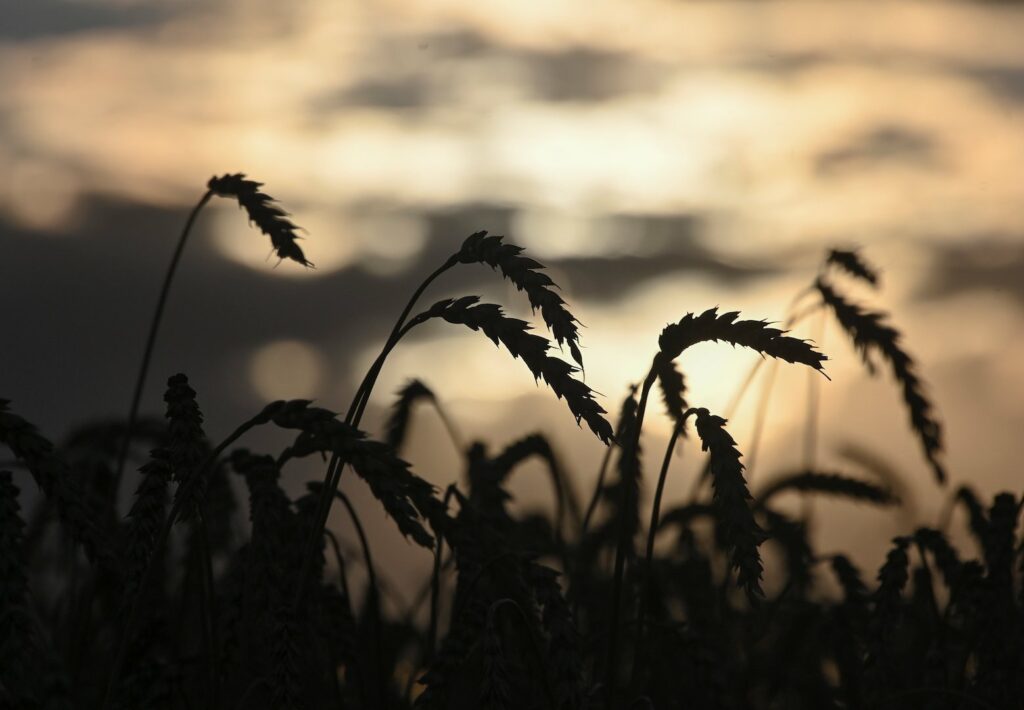In “Hurrahing in Harvest” the Jesuit poet Gerard Manley Hopkins revels in the marvelous elements of nature that herald the arrival of autumn. All his life, Father Hopkins discerned divine beauty in the beautiful things on earth, and autumn brings an abundance of them, many of them edible as well as nice to look at!
The poet, surveying the sheaves standing in a field and the wind-swept clouds in the blue sky, lifts up his heart and eyes: “Down all that glory … to glean our Savior.” Father Hopkins, who lived in the 19th century, was a psalmist for his age.
The biblical Psalms burst with the praises of God’s glory revealed in the natural world. Psalm 104 is a lengthy and lyrical paean to God as Creator of all things in the universe. It begins “Bless the Lord, my soul! Lord, my God, you are great indeed!” and continues for 35 verses to extol God’s work of creation, describing it in the most exquisite poetic language.
Psalm 96 invites the “sea and what fills it,” “all the trees of the forest” and other creatures to “rejoice before the Lord,” while in Psalm 98 “the rivers clap their hands” and “the mountains shout with them for joy” at the coming of the Lord.
In the U.S. we associate autumnal beauty with colorful foliage — nature’s own “last hurrah” before the quiet of winter takes hold. The Hebrew psalmists knew nothing of our fall foliage, but they did know about light.
As in all ancient civilizations before the ready availability of artificial light, light was a precious commodity. The psalmists use it as a metaphor for God’s care for us. “Your word is a lamp for my feet, a light for my path” (Ps 119). “The Lord is my light and my salvation” (Ps 27).
Psalm 148 calls upon “sun and moon … all shining stars” to praise the Lord, a call repeated in the great Canticle of Creation in the Book of Daniel. The New Testament continues the theme: the First Letter of John even tells us that “God is light” (1 Jn 1:5).
The varying qualities of sunlight reveal different aspects of the amazing variety of colors of the autumn leaves. Strong midday sunlight casts shadows, giving the trees a playful, dappled look. The rising and setting sun enhances the colors and throws the patterns on the trunks into relief. Sunlight muted by a cloud cover provides the even light beloved of photographers.
Eventually the leaves fall, forming a carpet of color on forest floors and suburban lawns and in city parks. The trees stand naked in the waning November light, which has its own bleak beauty, a calm as a prelude to nature’s winter restfulness.
Our Creator God’s own beauty is “past change” (Father Hopkins again, in a poem about spring!), yet in his unsurpassed goodness he reveals his beauty to us through nature in myriad ways.
And even as the last leaves fall, we see on the bare branches the tiny buds that will burst into fresh green growth in the spring — something to look forward to during the darkness of winter, which has its own shy but entrancing light.
Theologian Karl Rahner, writing of the human being’s innate longing for God, called God the horizon on which the eyes of our soul are constantly fixed. Let us heed St. Peter, who calls us to be attentive to God’s word “as to a lamp shining in a dark place, until day dawns and the morning star rises in (our) hearts” (2 Pt 1:19).
Nancy de Flon is a freelance editor, writer, translator and photographer.

